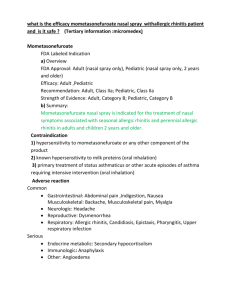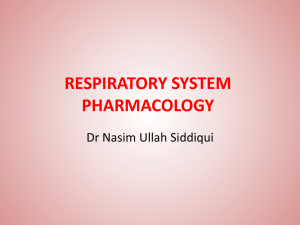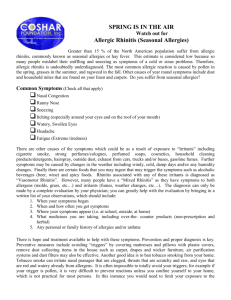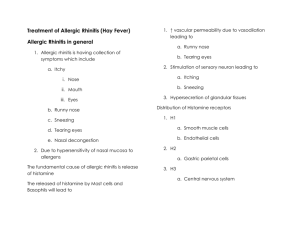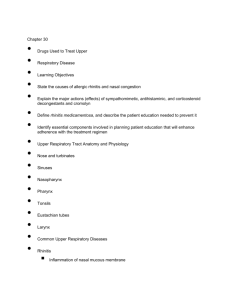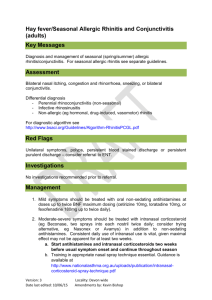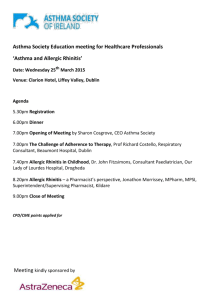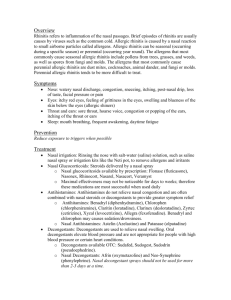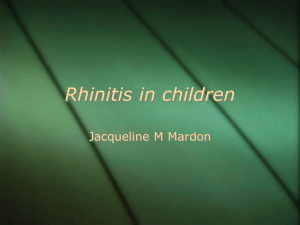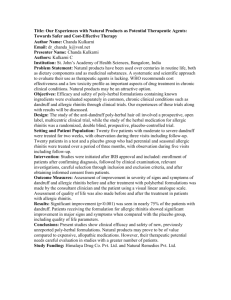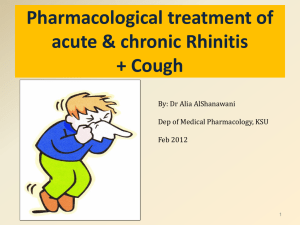Drugs Used to Treat Chronic Obstructive Pulmonary Disease
advertisement
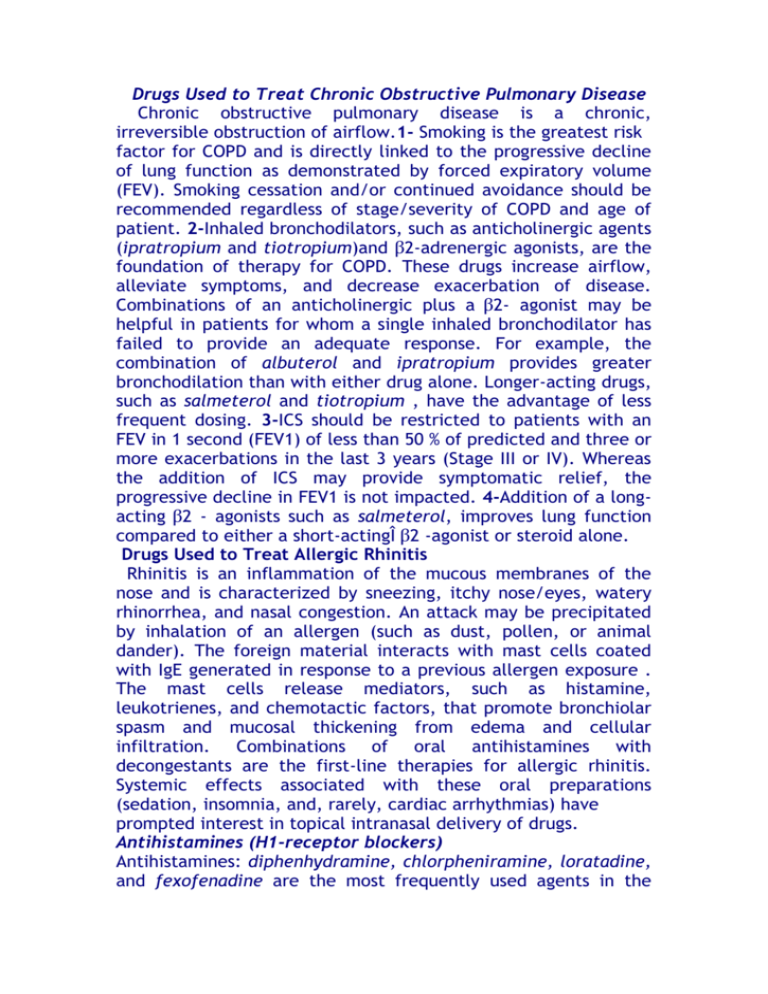
Drugs Used to Treat Chronic Obstructive Pulmonary Disease Chronic obstructive pulmonary disease is a chronic, irreversible obstruction of airflow.1- Smoking is the greatest risk factor for COPD and is directly linked to the progressive decline of lung function as demonstrated by forced expiratory volume (FEV). Smoking cessation and/or continued avoidance should be recommended regardless of stage/severity of COPD and age of patient. 2-Inhaled bronchodilators, such as anticholinergic agents (ipratropium and tiotropium)and β2-adrenergic agonists, are the foundation of therapy for COPD. These drugs increase airflow, alleviate symptoms, and decrease exacerbation of disease. Combinations of an anticholinergic plus a β2- agonist may be helpful in patients for whom a single inhaled bronchodilator has failed to provide an adequate response. For example, the combination of albuterol and ipratropium provides greater bronchodilation than with either drug alone. Longer-acting drugs, such as salmeterol and tiotropium , have the advantage of less frequent dosing. 3-ICS should be restricted to patients with an FEV in 1 second (FEV1) of less than 50 % of predicted and three or more exacerbations in the last 3 years (Stage III or IV). Whereas the addition of ICS may provide symptomatic relief, the progressive decline in FEV1 is not impacted. 4-Addition of a longacting β2 - agonists such as salmeterol, improves lung function compared to either a short-actingÎ β2 -agonist or steroid alone. Drugs Used to Treat Allergic Rhinitis Rhinitis is an inflammation of the mucous membranes of the nose and is characterized by sneezing, itchy nose/eyes, watery rhinorrhea, and nasal congestion. An attack may be precipitated by inhalation of an allergen (such as dust, pollen, or animal dander). The foreign material interacts with mast cells coated with IgE generated in response to a previous allergen exposure . The mast cells release mediators, such as histamine, leukotrienes, and chemotactic factors, that promote bronchiolar spasm and mucosal thickening from edema and cellular infiltration. Combinations of oral antihistamines with decongestants are the first-line therapies for allergic rhinitis. Systemic effects associated with these oral preparations (sedation, insomnia, and, rarely, cardiac arrhythmias) have prompted interest in topical intranasal delivery of drugs. Antihistamines (H1-receptor blockers) Antihistamines: diphenhydramine, chlorpheniramine, loratadine, and fexofenadine are the most frequently used agents in the treatment of sneezing and watery rhinorrhea associated with allergic rhinitis.. Ocular and nasal antihistamine delivery devices are available over-the-counter for more targeted tissue delivery. Combinations of antihistamines with decongestants are effective when congestion is a feature of rhinitis.. α-Adrenergic agonists Short-acting α -adrenergic agonists (nasal decongestants ), such as phenylephrine, constrict dilated arterioles in the nasal mucosa and reduce airway resistance. Longer-acting oxymetazoline is also available. When administered as an aerosol, these drugs have a rapid onset of action and show few systemic effects. Oral administration results in longer duration of action but also increased systemic effects. The α-adrenergic agonists should be used no longer than several days due to the risk of rebound nasal congestion (rhinitis medicamentosa). α-Adrenergic agents have no place in the long-term treatment of allergic rhinitis. Corticosteroids Corticosteroids, such as beclomethasone, budesonide, fluticasone, flunisolide, and triamcinolone, are effective when administered as nasal sprays. [Systemic absorption is minimal, and side effects of intranasal corticosteroid treatment are localized. These include nasal irritation, nosebleed, sore throat, and rarely, candidiasis.]. Topical steroids may be more effective than systemic antihistamines in relieving the nasal symptoms of both allergic and nonallergic rhinitis. Cromolyn: Intranasal cromolyn may be useful, particularly when administered before contact with an allergen. Due to a short duration of action, cromolyn requires multiple daily dosing, which may deleteriously impact adherence and, therefore, therapeutic efficacy. Drugs Used to Treat Cough Codeine is the gold-standard treatment for cough suppression. Codeine↓↓the sensitivity of cough centers in the CNS to peripheral stimuli and decreases mucosal secretion. These therapeutic effects occur at doses lower than those required for analgesia but still incur common SEs like :constipation, dysphoria, and fatigue,addictive potential.Dextromethorphan is a synthetic derivative of morphine that suppresses the response of the central cough center. It has no analgesic effects, has a low addictive profile, but may cause dysphoria at high doses. Dextro. has a significantly better side effect profile than codeine and has been demonstrated to be equally effective for cough suppression.

